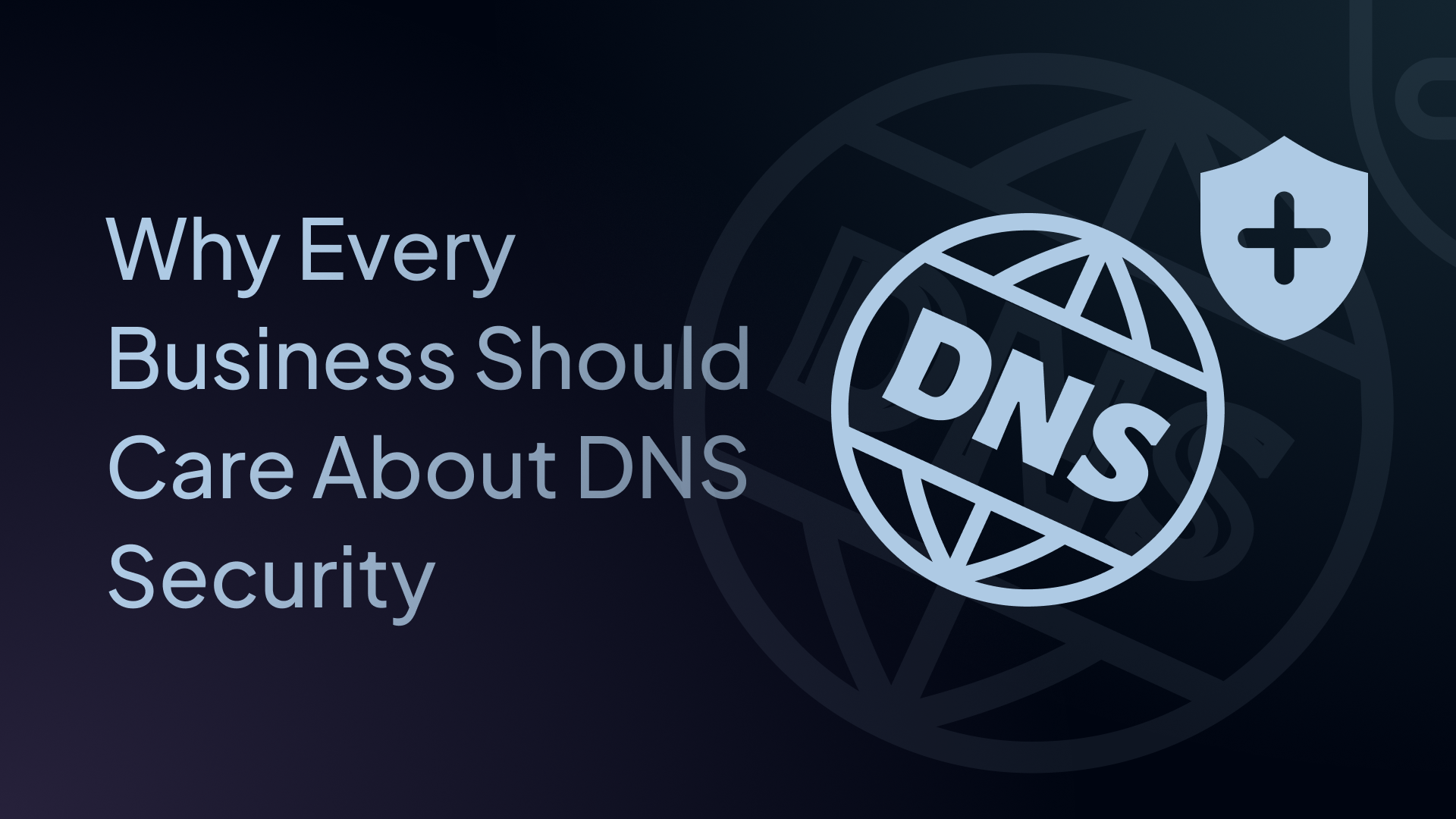Why Every Business Should Care About DNS Security
Learn how DNS is the first layer of cybersecurity defense, and why businesses ignore it at their own peril.

Cybersecurity conversations usually start with firewalls, antivirus tools, and VPNs. But there’s a critical layer that often gets overlooked: the Domain Name System (DNS).
Every online interaction in your business depends on it, and if it’s compromised, attackers can bypass your defenses, steal data, or take down services. Without DNS security, even the best-protected network has a wide-open back door.
DNS: The Overlooked Foundation of Cybersecurity
Most businesses are diligent about investing in firewalls, antivirus tools, and VPNs. Yet the DNS is often left unprotected. That oversight creates a critical security gap since DNS is your first line of defense.
Attackers know it, and they exploit DNS weaknesses to gain access, steal data, and disrupt operations. For businesses of all sizes, DNS security is no longer optional but a core layer of protection.
What DNS Security Really Means
DNS translates domain names into IP addresses, directing employees to websites, cloud applications, and internal tools. Without protection, this process is vulnerable to hijacking, spoofing, and data theft.
Compromised DNS can quietly reroute staff to fraudulent websites, exfiltrate sensitive data, or even make critical services unavailable. In other words, DNS security ensures employees are always connected to legitimate destinations and not malicious imitations.
Why Businesses Can’t Afford to Ignore It
Small and mid-sized businesses (SMBs) are particularly at risk. Attackers often see them as easier targets than large enterprises. Overlooking DNS security leaves every user, device, and cloud application exposed.
Some of the most common DNS-based threats include:
- Phishing redirects that trick employees into entering credentials on fake login pages.
- DNS tunneling that lets attackers sneak data out of the network undetected.
- Distributed denial of service (DDoS) attacks that flood DNS servers and make services unreachable.
- Cache poisoning that diverts traffic to malicious IP addresses without users realizing it.
What are the consequences of a DNS threat to your business? Costly downtime, regulatory noncompliance, reputational harm, and loss of customer trust.
Beyond Traditional Network Security
Traditional defenses like firewalls and endpoint protection are essential, but they don’t always cover DNS. That loophole allows attackers to bypass even the strongest perimeter defenses.
Think of it this way: network security is like the locks and alarms on a building, and DNS security is the trusted directory that ensures employees walk into the correct office instead of an impostor’s setup across the street.
Practical Steps for Stronger Protection
The good news is that businesses can significantly reduce DNS risks with straightforward safeguards:
- Enable DNS filtering to block access to known malicious or unwanted domains.
- Adopt encryption protocols (like DNS over HTTPS or DNS over TLS) to prevent eavesdropping and tampering.
- Implement DNSSEC to verify the authenticity of DNS records.
- Use a secure DNS provider that goes beyond default ISP services and adds threat intelligence and customization.
Our recommended safety measures, when combined with your existing network defenses, create a stronger and more resilient security system. These are all facets of top DNS security products, designed to keep your network secure.
How Control D Helps Manage DNS Challenges
Most free or default DNS services don’t provide the kinds of protections mentioned above. That’s why organizations increasingly turn to customizable services like Control D.
With Control D, your business can:
- Block phishing sites, malware, and trackers.
- Gain visibility into DNS traffic for compliance and analytics.
- Customize filtering rules for specific teams, offices, or remote users.
Control D combines privacy-first design with powerful security features to give businesses both flexibility and peace of mind.

Secure the DNS Gateway to Protect Your Business
Every online interaction begins with a DNS request. Leaving it unsecured is like building a fortress but leaving the front gate wide open.
Companies can easily safeguard data, protect employees, and maintain customer trust by adopting solutions like Control D.

